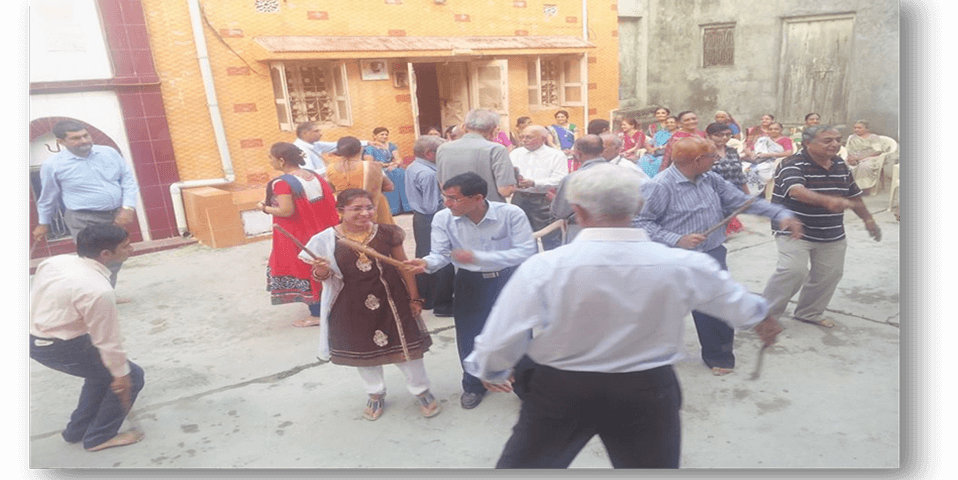Read this blog post in: Português | ગુજરાતી
Dandiya Raas is the most popular dance of not only Gujarat but also all of the states throughout India. It is a special feature of the Navratri Festival. Dandiya is a dance form usually performed in a group, by both men and women. The special feature of the Dandiya dance is the colourful attire worn by the dancers and the colourful sticks carried by them. The wooden sticks made of bamboo are used as props and are beautifully decorated. The circular movements of Dandiya Raas are slightly more complex than that of Garba.
One of the circles revolves clockwise, while the other revolves anticlockwise. The dance is a very energetic and fast paced activity, which leaves no scope for lethargy. The dancers are accompanied by an instrument player with a drum. The player stands in the centre of the two circles and leads the dancers with his beats. The site of hundreds of people swaying to the beat of folk music is awe- inspiring. The sticks or the Dandiyas, when struck together in a rhythm, produce foot-tapping musical waves.
On the occasions of Divaso, Kajli Teej and Veerpasali (on the second Sunday of the month of Saavan), the Vanzas and Darjis take with them their colourful Dandiyas and play Dandiya Raas in the chowk of the Totla Devi temple.
Divaso
Divaso, which falls on the amavasya of Ashadh’s Krishna paksha, is a unique ritual performed as a sort of invitation to the Saavan month, which begins on the next day. The holy month of Saavan is dedicated to God Shiva. It is associated with the monsoon season which is crucial for good harvest and the prevention of draughts.
The Divaso festival is associated with Evrat Jivrat Vrat which is observed by married women in honour of Goddess Parvati for the well-being and longevity of their husbands and children. It is celebrated from the triyodashi (thirteenth day) of Ashadh’s Krishna paksha until the amavasya of Ashadh’s Krishna paksha with immense joy and devotion. In the evening before Divaso, married women light a lamp and keep it for the next thirty six hours until the Saavan month begins. In some regions, Goddess Parvati is worshipped in the form of jawaras, grown from seeds which are sown the day before Vrat. A ghee lamp is lit before the jawaras. Womenfolk stay awake until the wee hours of morning, singing, dancing and playing games. The Vrat takes its name ‘Divaso’ from this ritual.
On the day of Divaso, the Vanzas and Darjis play Dandiya Raas in tune with Garba songs, in the chowk of the Totla Devi temple.
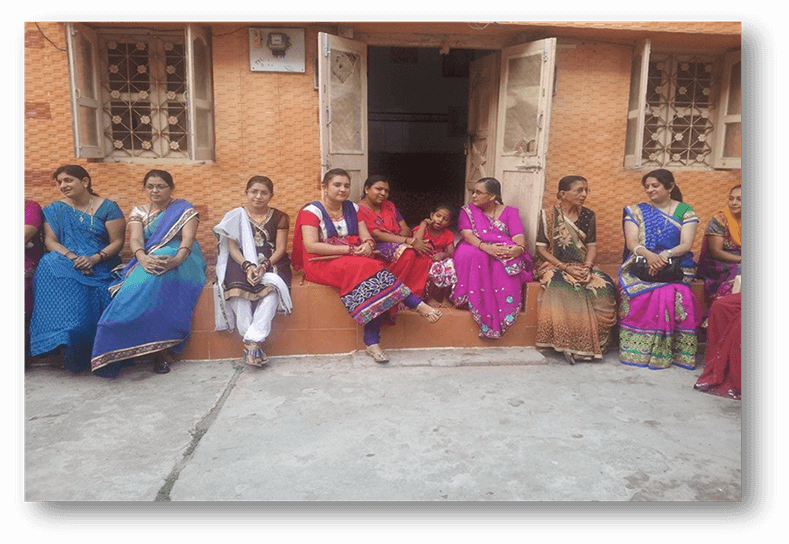
In this photograph, one can see womenfolk gathered in the chowk of the Totla Devi temple, on the occasion of Divaso, eagerly waiting for the Dandiya Raas to begin. Photo courtesy Shreeman Hasmucrai Amarchande.
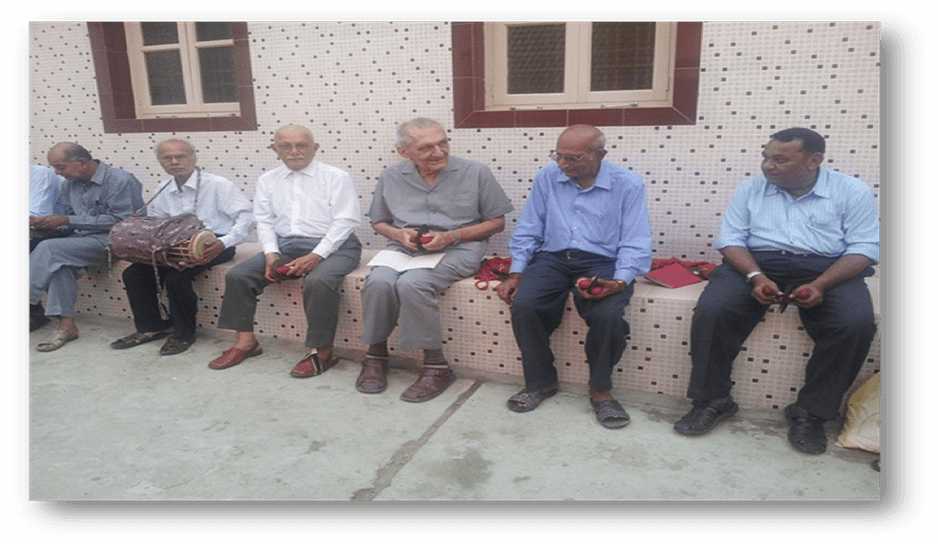
In this photograph, one can see the musicians preparing to perform. Photo courtesy Shreeman Hasmucrai Amarchande.

In this photograph, one can see the musicians standing in the centre of the chowk, ready to play the music for the Dandiya Raas. Photo courtesy Shreeman Hasmucrai Amarchande.
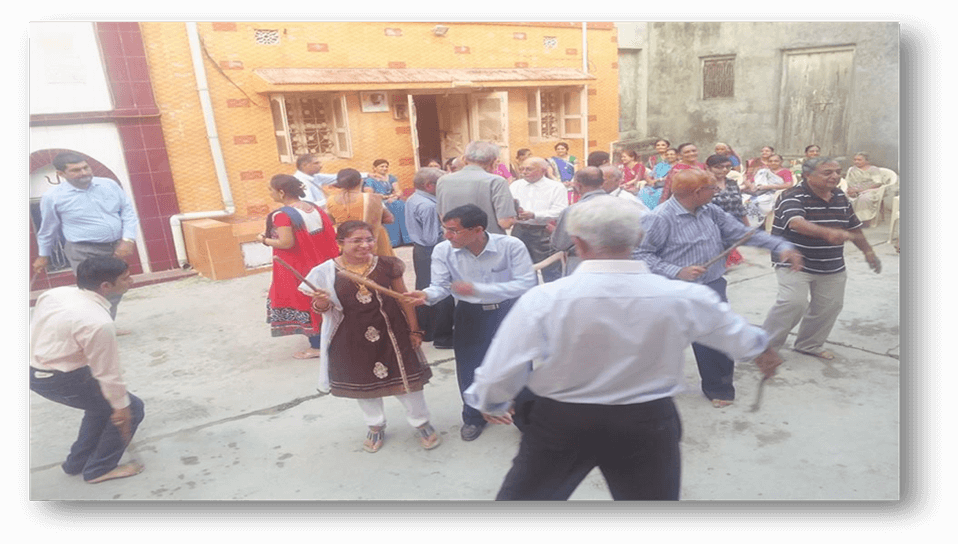
In this photograph, one can see members of the community joyfully playing Dandiya Raas. Photo courtesy Shreeman Hasmucrai Amarchande.
Rakshaabandhan
Eternal bond of love on wrist,
That’s the message in gist
Rakshaabandhan is celebrated on the Purnima of Saavan. The main ceremony consists of the tying of the Raakhee thread by the sister on her brother’s wrist. The sister also wishes her brother a long life and seeks his rakshaa (literally, ‘protection’). The brother, in turn, gives her the pledge of life-long care and presents her with gifts.
Originally, the raakhee was a hand spun cotton thread dyed yellow with turmeric, but now many colours and materials are used. Three knots are made in the thread to signify protection in thought, word and deed. This day is also celebrated as Narieli Purnima, when coconuts are offered to Varuna, God of the Sea, by throwing them into the ocean.
On this day also falls Avani Avittam, the ceremony of exchanging sacred thread amongst the brahmins. This tradition dates back to Vedic times when the year’s studies were commenced on this day.
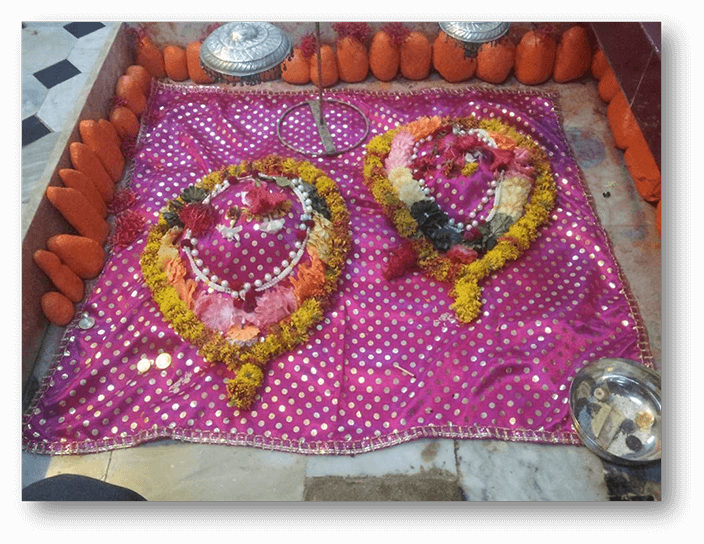
In this photograph, one can see the beautiful image of the beloved Goddess Totla Devi inside the temple. Photo courtesy Shreeman Hasmucrai Amarchande.
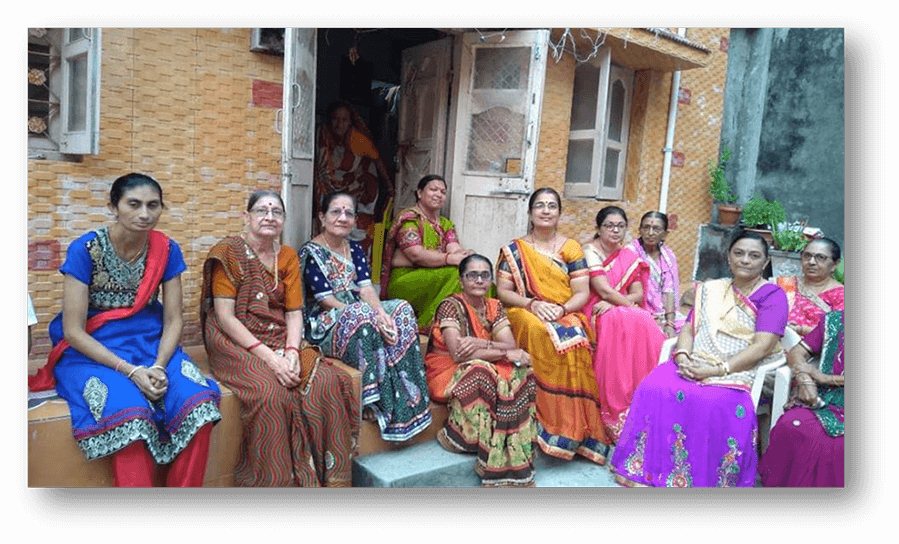
In this photograph, one can see womenfolk seated, waiting for the beginning of the Dandiya Raas on the occasion of Veerpasali. Photo courtesy Shreeman Hasmucrai Amarchande.
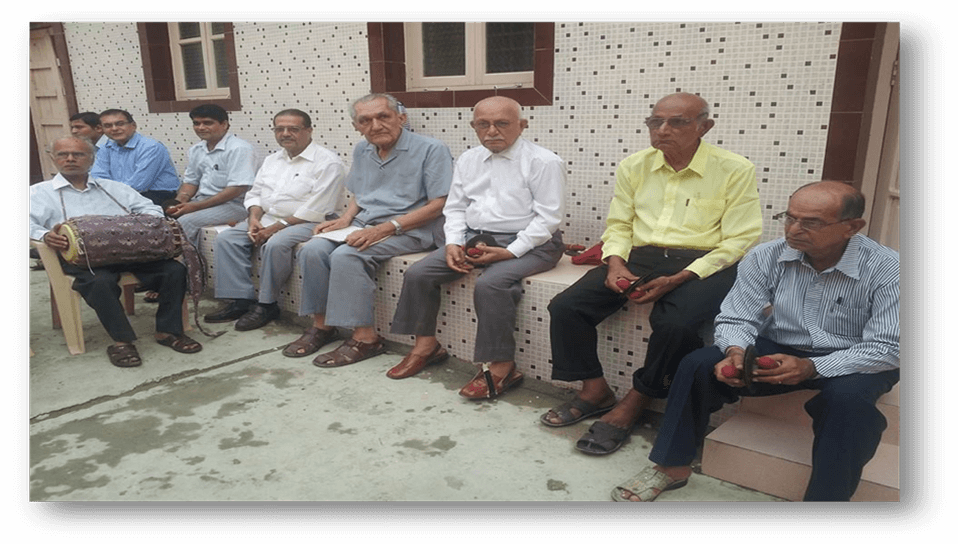
In this photograph, one can see the musicians before they start performing. Photo courtesy Shreeman Hasmucrai Amarchande.
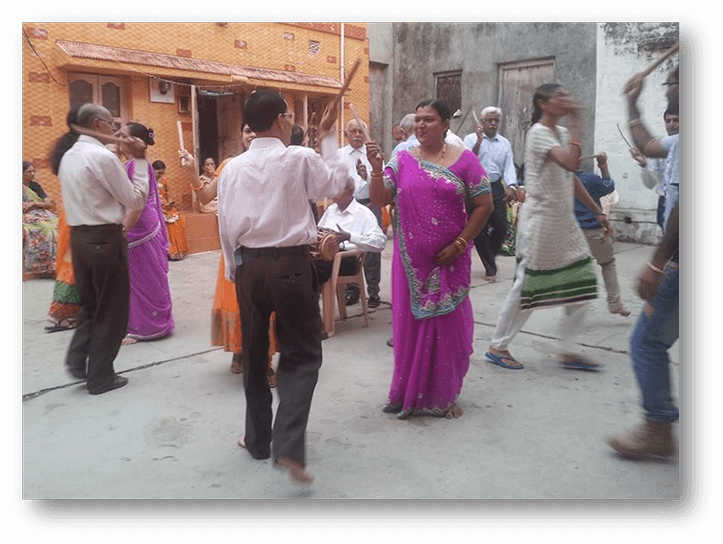
In this photograph, one can see the members of the community joyfully playing Dandiya Raas on the occasion of Veerpasali. Photo courtesy Shreeman Hasmucrai Amarchande.
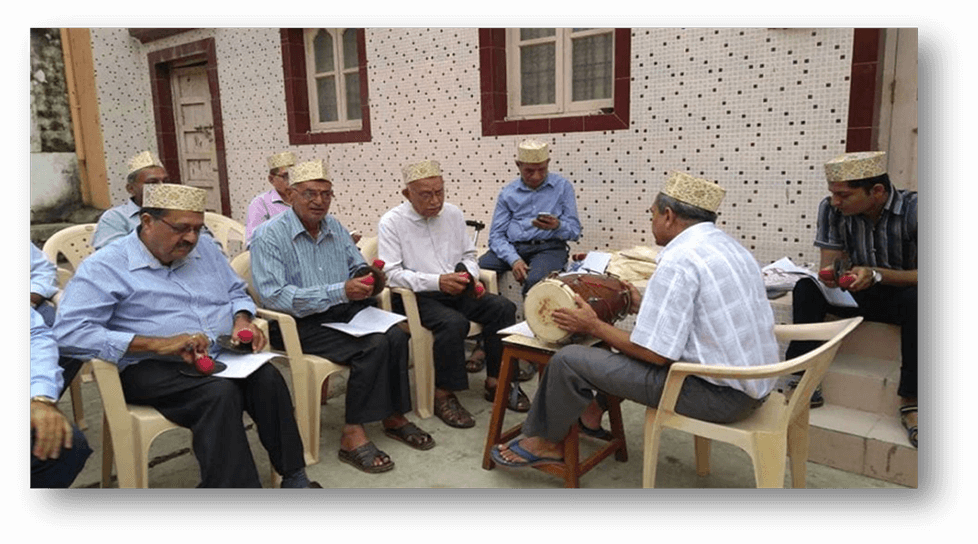
In this photograph, one can see the musicians rehearsing. Photo courtesy Shreeman Hasmucrai Amarchande.

In this photograph, one can see the musicians seated in the centre of the chowk, ready to start performing the songs for the Dandiya Raas. Photo courtesy Shreeman Hasmucrai Amarchande.
Kajli Teej
The third day of Saavan’s Krishna paksha is called Kajli Teej. On this day, womenfolk fast and pray to Lord Shiva for the longevity of their husband’s life.

In this photograph, one can see womenfolk, on the occasion of Kajli Teej, eagerly waiting for the Dandiya Raas to begin. Photo courtesy Shreemati Vipti Vasantcumar.
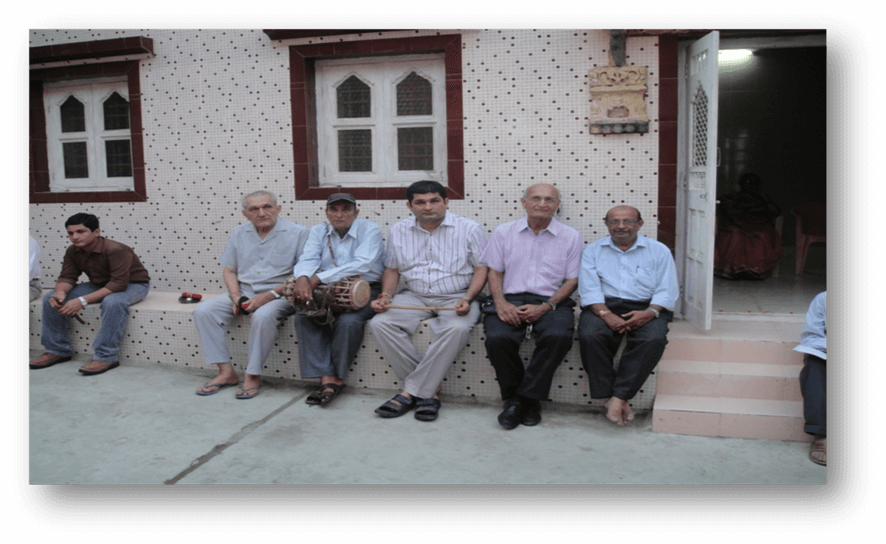
In this photograph, one can see menfolk, on the occasion of Kajli Teej, eagerly waiting for the Dandiya Raas to begin. Photo courtesy Shreemati Vipti Vasantcumar.
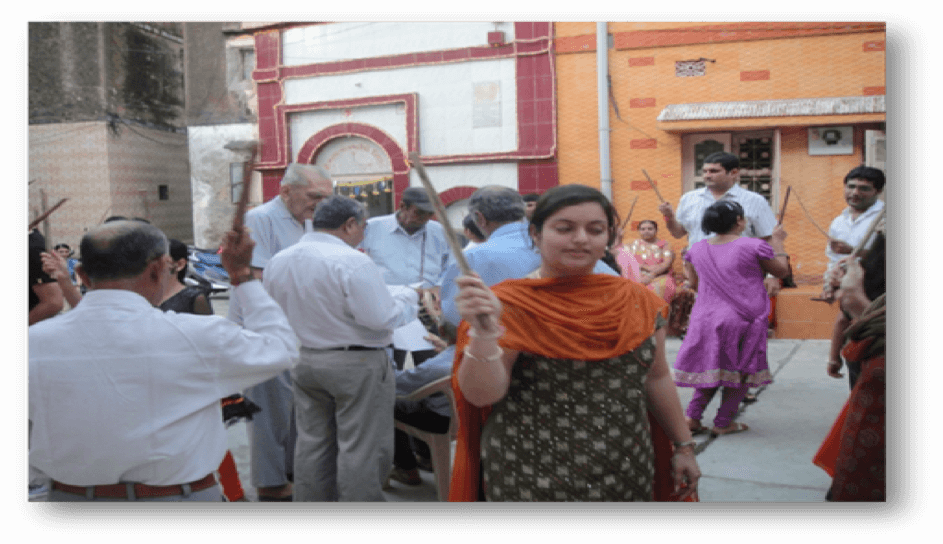
In this photograph, one can see the members of the community joyfully playing Dandiya Raas on the occasion of Kajli Teej. Photo courtesy Shreemati Vipti Vasantcumar.
Post by Dipac Canacsinh
Acknowledgements
I thank Shreeman Pradip Vassantlal for improving the Gujarati version of this article.
My gratitude also goes to Shreeman Hasmucrai Amarchande and Shreemati Vipti Vasantcumar for providing me with the photographs used in this article.

